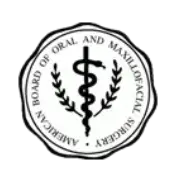A Year of Oral Health Guidance in Review
By David Cavano, Dental Health
Summer is here! Here's some oral health guidance from the past year to help you understand what new information is available and which tried-and-true practices still stand. The Oral Surgery DC Team
Sometimes it is hard to keep up with all of the new guidance about our health. What we were told yesterday is healthy, is now unhealthy today. Here, I have distilled down some of the oral health guidance from the past year so you can understand what new information is available and which tried-and-true practices still stand.
Toss Teething Tablets
The Food and Drug Administration (FDA) has warned against the use of homeopathic teething tabs and drops that contain belladonna. An FDA Press Release instructed consumers not to use Hyland's teething products and to dispose of any in their possession. Hyland's Teething Tablets are manufactured to contain a small amount of belladonna, a substance that can cause serious harm at larger doses. FDA laboratory analysis has discovered that Hyland's Teething Tablets contain inconsistent amounts of belladonna.
Safe teething relief strategies to try: Gently message areas near erupting teeth using a clean finger. Cool objects may provide relief, so consider chilled (not frozen) wash cloths, a semi-frozen banana or a commercial teething ring. Make certain teething rings are of one-piece construction, free of painted surfaces, and sufficiently large to avoid choking.
Weigh the Risks and Benefits of General Anesthesia and Sedation Drug Use in Children
In January 2017, the American Academy of Pediatrics (AAP) responded to the FDA warning on general anesthesia and sedation drug use in children. This warning includes the possibility of developmental problems associated with repeated or prolonged use of anesthetics in children younger than 3 years of age. The FDA advisory committee has been reporting about the concerns regarding anesthesia in young children since 2007 and aims to increase awareness in providers enabling the provision of education for families and subsequent informed consent.
Section and AAP Leadership worked together, along with several other societies, to form a response to this warning. These groups have reviewed recent controlled trials in humans as well as multiple epidemiological studies of large populations that demonstrate no developmental problems in children exposed to a single, short anesthetic or sedation. The response cautions parents and providers of the risks of delaying needed surgery and diagnostic procedures and suggests weighing the risks and benefits of each contemplated procedure.
Use Fluoride Toothpaste in Young Children
The AAP, American Academy of Pediatric Dentistry (AAPD), and the American Dental Association (ADA) all agree that fluoride toothpaste should be used for all children, regardless of age. Upon arrival of the first primary tooth, parents should begin using a grain-of-rice sized amount of fluoridated toothpaste regardless of both water fluoride content and cavities risk status. Brushing is advised twice daily, ideally after a morning meal and always prior to bedtime.
Use Toothpaste to Deliver Fluoride, Not to Remove Plaque
December 2016 Journal of Clinical Periodontology. Toothpaste does not provide an added effect for the mechanical removal of dental plaque. However, toothpaste use should continue as it promotes oral health as a delivery system for fluoride and antimicrobials.
All Children Should Receive Fluoride Varnish Application
All children, regardless of risk may receive fluoride varnish applications in the primary care setting. The frequency of application is dependent upon the compliance with the use of a dental home as well as cavities-risk.
Recent studies published in the September 2016 Journal of the American Academy of Pediatric Dentistrycontinue to demonstrate the safety of fluoride varnish, concluding that biannual fluoride varnish application in preschoolers is not associated with the occurrence of any level of fluorosis in permanent maxillary incisors.
Drink Water with Fluoride
In 2017, community water fluoridation programs continue to be the most effective and affordable way to prevent dental caries in children and adults. Although there were no new recommendations this year, we must all continue to advocate for this practice and recommend that our patients and their families drink water with fluoride for cavity-protection.
While the above is not a comprehensive listing of all professional guidance around oral health, they may well be the most important messages to share during National Children's Dental Health Month and throughout the year.
Article from: http://buff.ly/2wbHHMZ






4.9 Stars
based on 134 reviews
5 Stars
based on 11 reviews
5 Stars
based on 11 ratings